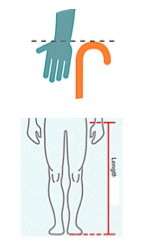|
Do you need a walking stick? You may benefit from using a walking stick If you feel:
or when you want to walk further than usual. Using a walking stick is not a sign of ‘giving in’ and can often be used as a temporary measure to keep you safe and relieve the pain of sore joints.  Choosing a walking stick:
Using a walking stick correctly:
- Going down, the stick goes first, and then the sore leg and the good leg last Compiled for you by our physiotherapists If you need more advice on how to choose the correct walking stick, just contact us at Therapy Professionals our friendly physiotherapists can help. Phone: 3877 5280 Fax: 03 377 5281 Website: www.therapyprofessionals.co.nz Email: [email protected] Comments are closed.
|
AuthorShonagh O'Hagan Archives
July 2024
|

 RSS Feed
RSS Feed